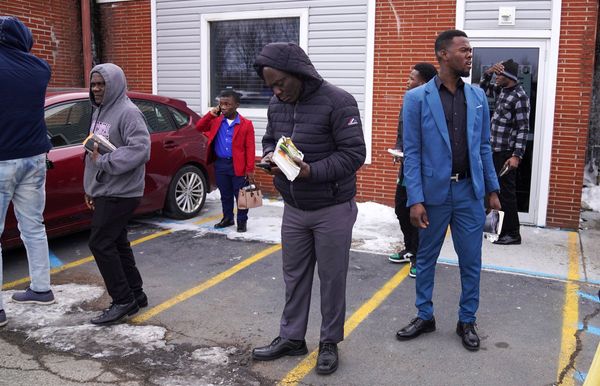While the word “hate” typically connotes strong feelings of anger or dislike, the legal definition is more specific: hate refers to bias against individuals or groups based on specific characteristics defined by the law, no matter the offender’s emotional state.
What is a hate crime?
Federal laws identify hate crimes as crimes motivated by a victim’s perceived race, color, religion, national origin, sexual orientation, gender, gender identity, or disability. Many states have their own hate crime laws covering similar bias categories.
Hate crimes include violent acts against both people and property: assault, murder, arson, vandalism, or threats of or conspiracy to commit these crimes. The Federal Bureau of Investigation (FBI) classifies assault and murder as crimes against persons, and arson or vandalism as crimes against property.
By contrast, “bias incident” or “hate incidents,” which are acts of prejudice that are not crimes, and do not involve violence, threats, or property damage.
Both misdemeanors and felonies can be considered hate crimes, depending on the details of the underlying crime, state laws, and the details of the case.
Federal law automatically classifies a violation of all hate crime statutes as a misdemeanor. An “aggravated factor” that could elevate the crime from a misdemeanor to a felony includes using a weapon, actions that result in bodily harm, sexual abuse, kidnapping, attempted murder, or murder.
Statutes that define when misdemeanors can be elevated to felonies include:
-Federally protected activities, which includes employment, public education, jury duty, travel, or the enjoyment of public accommodations
-Church Arson Prevention Act
-The Matthew Shepard and James Byrd, Jr., Hate Crimes Prevention Act
-Criminal Interference with Right to Fair Housing
Hate speech can be offensive and hurtful to those who experience it, but it’s not usually considered a crime. Speech is protected under the First Amendment until it becomes illegal conduct, such as threats of violence or incitement to break the law.
Are hate crimes on the rise?
Reported hate crimes rose 108% over nine years, from a low of 5,597 in 2014 to 11,643 in 2022.
Prior to 2014, the lowest number of reported hate crimes was 1991’s 4,589. Between 2010 and 2019, an estimated 56% of hate crimes were not reported to the police.
Have there been notable spikes in reported hate crimes?
Since data tracking began in 1991, hate crimes peaked in 2001 and again in 2022.
Hate crimes spiked in 2001 largely motivated by the September 11 terrorist attacks. The backlash was particularly severe against those perceived to be Muslim or of Middle Eastern descent.
The 2022 peak is part of a multi-year upward trend, beginning in 2014, rather than a reaction to a single event. In 2022, race-based crimes were the most common, more than half of religion-based hate crimes were anti-Jewish, and LGBTQI+ hate crimes increased more than 10% compared to 2021.
Get facts first
Unbiased, data-driven insights in your inbox each week
You are signed up for the facts!
Recent hate crime trends
From 2014 to 2022, reported hate crimes rose at an average of 756 hate crimes per year. Since 2014, the three most common hate crimes are those committed on the basis of race/ethnicity/ancestry, religion, and sexual orientation.
Within each category, the most prevalent biases in 2022 were anti-Black, anti-Jewish, and anti-gay male; between 2014 and 2022 anti-Black hate crimes increased 108%. Anti-Jewish crimes increased 83%, and anti-gay male crimes increased 76%.
How many hate crimes are there per year?
Since 1991, there have been an average of 7,552 hate crimes per year. The lowest number of reported hate crimes was in 1991 (4,589), and the highest number was reported in 2022 (11,643). According to the National Institute of Justice, hate crimes are underreported due in part to variations in how hate crimes are defined across jurisdictions, law enforcement’s inability to categorize some victimizations as hate crimes, and reluctance of victims to engage with law enforcement.
How do you report a hate crime?
If you believe you’re the victim of a hate crime or that you witnessed one file a report with the FBI at tips.fbi.gov or call 1-800-CALL-FBI (1-800-225-5324). Non-crime incidents can be reported to the Civil Rights Division at civilrights.justice.gov.
The nonprofit VictimConnect offers trained victim-assistance specialists at no cost to help victims find local support services at 1-855-484-2846, or via chat.
Where does this data come from?
Although hate crimes were outlawed by the Civil Rights Act of 1968, it was not until 1990 that Congress passed the Hate Crime Statistics Act, which required the FBI to collect data about crimes that involve prejudice based on race, religion, sexual orientation, or ethnicity.
Since then, several other legal statutes have altered the definition of a hate crime, leading the FBI to widen its scope for hate crime data collection. The most wide-reaching change came in 2009, when the Matthew Shepard and James Byrd, Jr., Hate Crimes Prevention Act applied federal hate crime law to crimes motivated by a victim’s actual or perceived disability, all sexual orientations, gender, and gender identity. It also removed the requirement that a victim be carrying out a federally protected activity.
The Hate Crime Statistics program captures hate crime offenses submitted to the FBI from local, state, and federal law enforcement agencies.
Get a fuller picture of crime in the US and more USAFacts data in your inbox by subscribing to our weekly newsletter.







